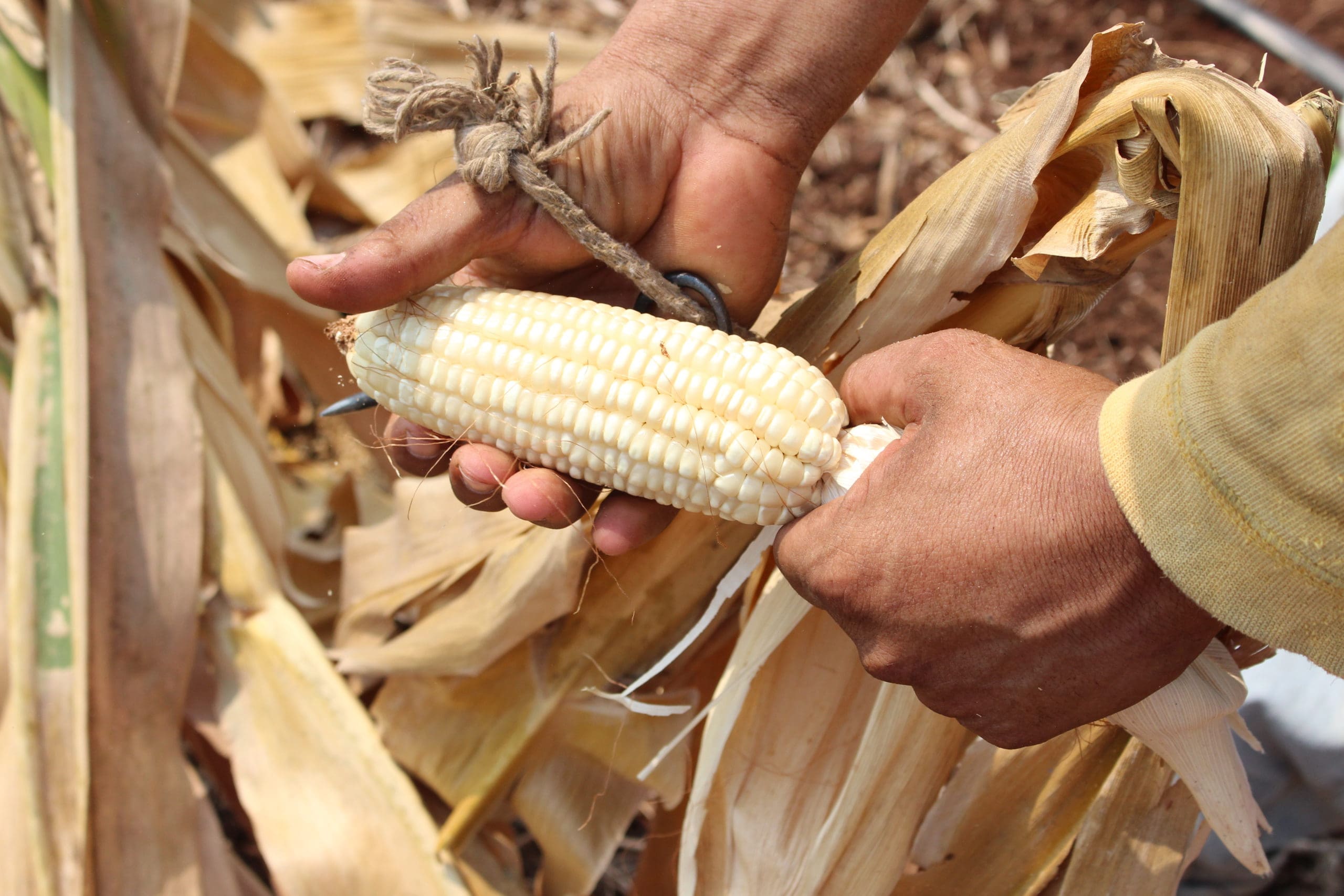A Game-Changer in Breeding Maize for Better Nutrition

In February, Semilla Nueva launched its first gene editing project with scientists at the University of Wisconsin. This technology could transform Semilla Nueva’s ability to scale biofortified maize.
“Imagine a pair of tiny precision scissors that allow us to insert a gene for nutrition into the DNA of a maize variety known for its high yields and climate resilience,” explains Enrique Kreff, Semilla Nueva’s Breeding Director. “Gene editing tools like CRISPR allow us to make these changes at the exact location in the plant’s DNA where a desired trait, such as Zinc or Iron content, is located. This approach can bypass years of traditional breeding, making it much cheaper and faster to biofortify any maize seed for any part of the world.”
Enrique explains that since our use of gene editing will involve minor genetic modifications, the resulting seeds will be considered non-GMO.
Until now, Semilla Nueva has relied on a conventional breeding approach called “backcrossing,” through which a desired trait in one variety (such as Zinc content) is introduced into another with desired characteristics (such as high yield) through successive generations of planting, selection, and replanting. This process requires 4-6 years and as much as $300,000 for hybrid related. CRISPR could reduce the time and cost to a year and $30,000, respectively.
According to Semilla Nueva’s Executive Director, Curt Bowen, “Gene editing could be a real game-changer for us, making it possible to quickly and inexpensively biofortify the best possible seed for any location in the world.”
While its potential is exciting, the use of CRISPR in maize breeding, especially for nutritional improvements, is still relatively new. Enrique explains, “The first step of our three-year project focuses on looking at 15 genes we’ve identified as potentially responsible for improving nutritional content in maize. From there, we’ll select between 4 to 6 of the most promising genes and use CRISPR to biofortify maize developed by the Government of Guatemala for highland regions and well as other seeds for Central America and Africa.”
We look forward to keeping you updated on our progress!
Subscribe!
Subscribe to our newsletter to hear stories of how we are changing the lives of farmers and their families.

